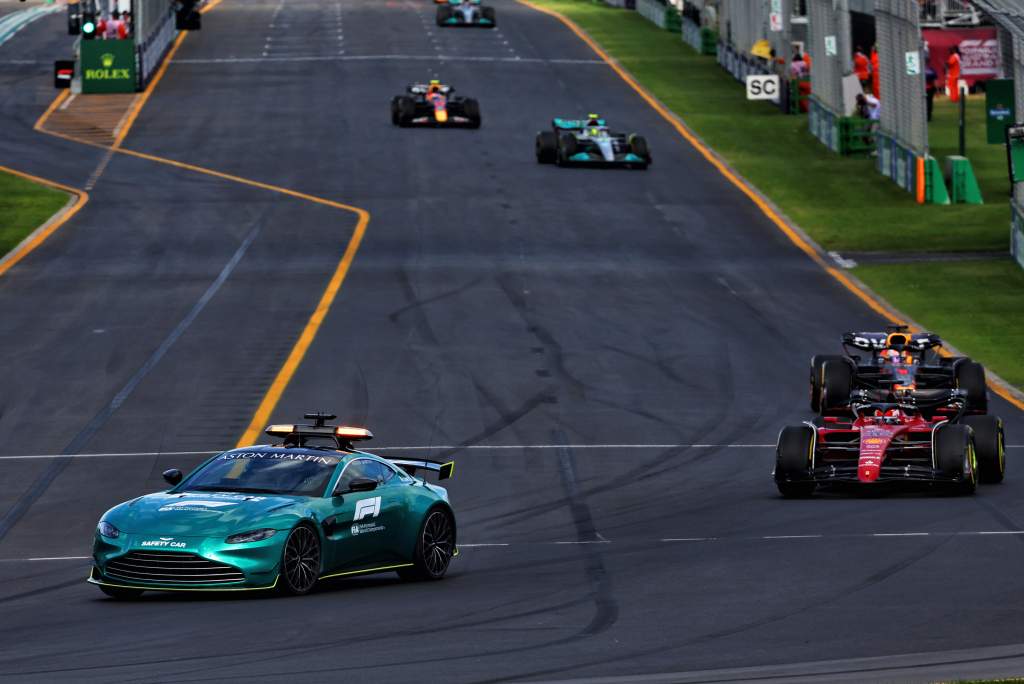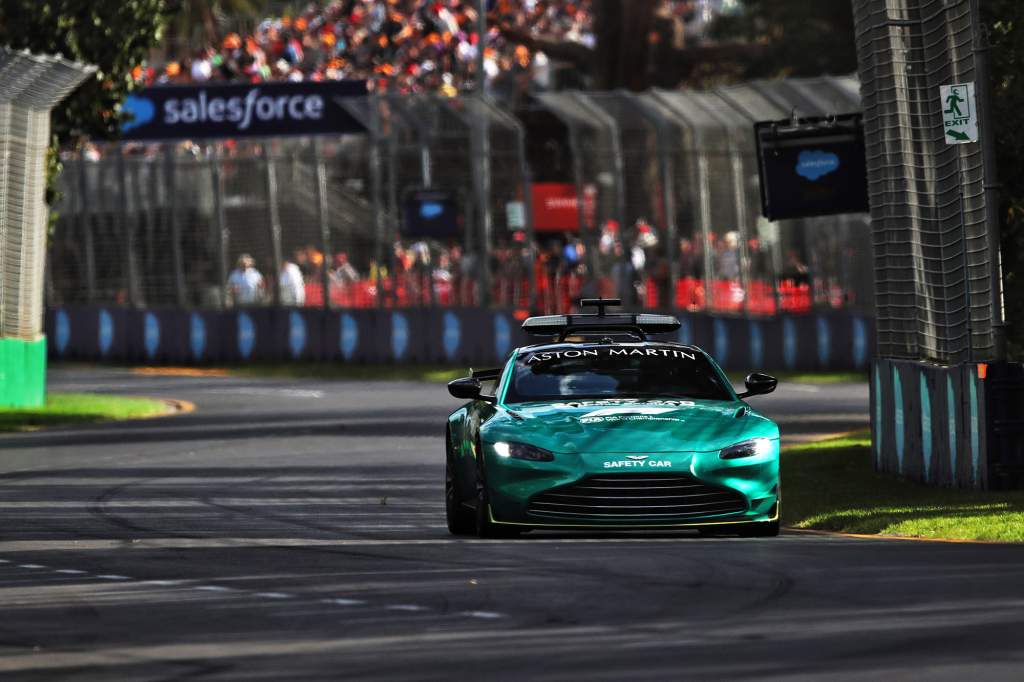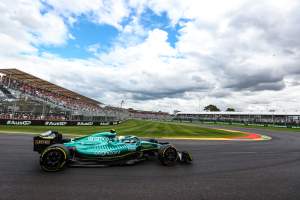Up Next

The FIA has issued a statement defending the performance of Formula 1’s safety cars, after world champion Max Verstappen suggested the Aston Martin one was “like a turtle”.
After long using just Mercedes as its safety and medical car supplier, last year F1 added Aston Martins to its options for those roles.
This season it is using the Aston Martin Vantage at 12 of the 23 grands prix, starting with Australia last weekend.
When asked about the safety car restart at which Charles Leclerc ran wide and nearly lost the lead, Verstappen said his rival’s error was a consequence of the Aston Martin’s poor performance.
It’s just that there’s so little grip because the safety car was driving so slowly,” Verstappen said.
“It was like a turtle. Unbelievable. With that car, to drive 140km/h on the back straight where that was not a damaged car anymore, I don’t understand why we have to drive so slowly.
“We have to investigate. For sure the Mercedes safety car is faster because of the extra aero.

“The Aston Martin is really slow. It definitely needs more grip, because our tyres were stone cold.
“We went into the last corner and I could see Charles understeering, so I’m like ‘OK I’ll back off a bit more and get a better line’.
“But it’s pretty terrible, the way we are driving behind the safety car at the moment.”
The FIA’s statement on Thursday did not address the relative pace of the Mercedes-AMG GT Black Series and Aston Martin Vantage, arguing that the speed at which the safety car laps the track has little to do with the model’s outright performance.
“In light of recent comments regarding the pace of the FIA Formula 1 safety car, the FIA would like to reiterate that the primary function of the FIA Formula 1 safety car is, of course, not outright speed, but the safety of the drivers, marshals and officials,” said the statement.
“The safety car procedures take into account multiple objectives, depending upon the incident in question, including the requirement to ‘bunch up’ the field, negotiate an incident recovery or debris on track in a safe manner and adjust the pace depending on recovery activities that may be ongoing in a different part of the track.
“The speed of the safety car is therefore generally dictated by race control, and not limited by the capabilities of the safety cars, which are bespoke high-performance vehicles prepared by tw of the world’s top manufacturers, equipped to deal with changeable track conditions at all times and driven by a hugely-experienced and capable driver and co-driver.
“The impact of the speed of the safety car on the performance of the cars following it is a secondary consideration, as the impact is equal amongst all competitors who, as it always the case, are responsible for driving in a safe manner at all times according to the conditions of their cars and the circuit.”

Although the Aston Martin has been modified from the road-going base model for its F1 role, it is a lower performance specification than the Mercedes. Information released by the two manufacturers when announcing their 2022 F1 deals suggests the Mercedes’ power output is a little under 200bhp higher in addition to the aerodynamic differences between them.
Mercedes driver George Russell responded to Verstappen’s comments with light-hearted praise for how good the Mercedes safety car is, before adding: “On a serious note the Mercedes AMG is like five seconds, a lot quicker than the Aston Martin safety car, which is pretty substantial.”

But Leclerc defended the safety car’s performance when asked for his thoughts on it by The Race.
“To be honest it always feels too slow in the car because with those Formula 1 cars, we have so much grip and it’s very, very difficult [to maintain tyre temperature], especially on the compound we were all on, which was the hards,” he replied.
“I was struggling massively to put some temperature in them so I also struggled.
“Then, to be honest, I wanted to complain, but then I checked how much the safety car was sliding in the corner and I don’t think there was anything more that he could give so I didn’t want to push too much pressure on.
“It’s the way it is. But for sure with the cars that we have now it’s very difficult to keep the temperature in the tyres behind the safety car.”




